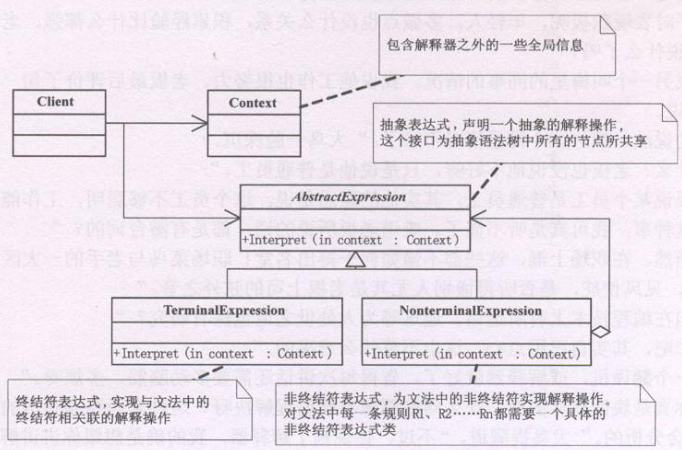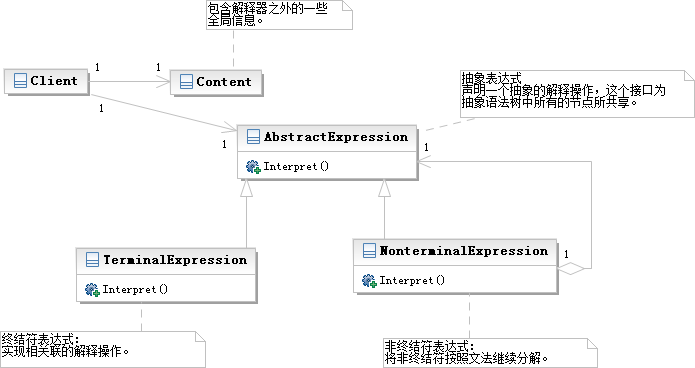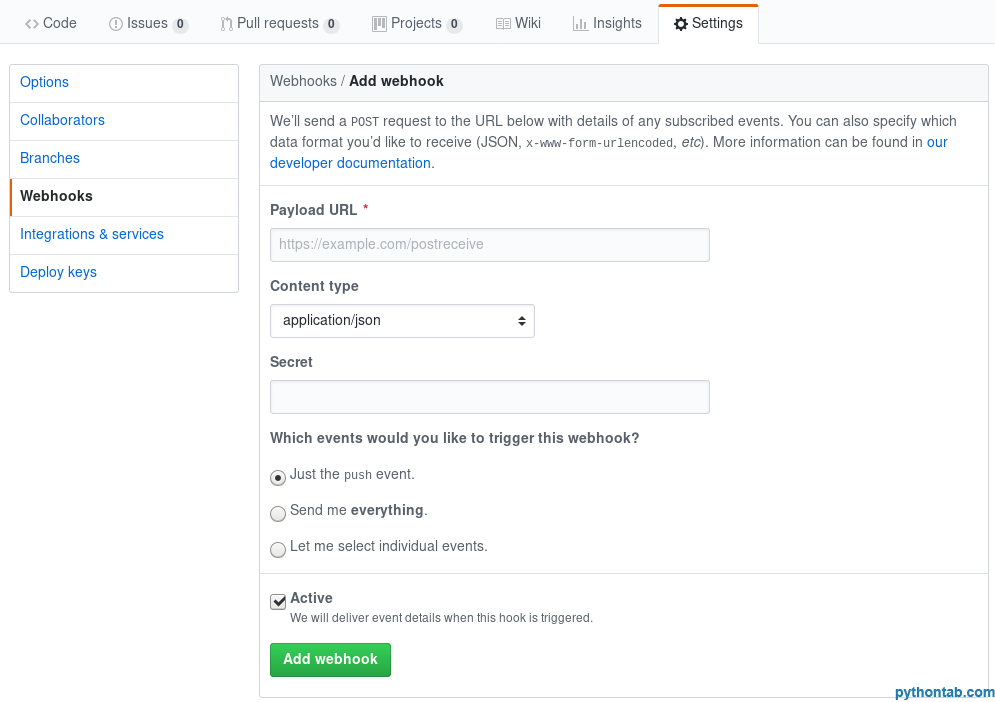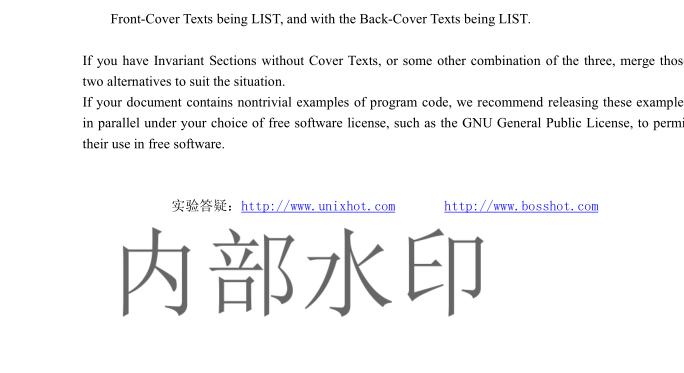Python设计模式编程中解释器模式的简单程序示例分享
模式特点:给定一个语言,定义它的文法的一种表示,并定义一个解释器,这个解释器使用该表示来解释语言中的句子。
我们来看一下下面这样的程序结构:
class Context:
def __init__(self):
self.input=""
self.output=""
class AbstractExpression:
def Interpret(self,context):
pass
class Expression(AbstractExpression):
def Interpret(self,context):
print "terminal interpret"
class NonterminalExpression(AbstractExpression):
def Interpret(self,context):
print "Nonterminal interpret"
if __name__ == "__main__":
context= ""
c = []
c = c + [Expression()]
c = c + [NonterminalExpression()]
c = c + [Expression()]
c = c + [Expression()]
for a in c:
a.Interpret(context)
那么它所体现出的类图是这样的:

再来看一个例子:
#encoding=utf-8
#
#by panda
#解释器模式
def printInfo(info):
print unicode(info, 'utf-8').encode('gbk'),
#上下文类:演奏内容
class PlayContext():
text = None
PlayText = None
#抽象表达式类
class Expression():
def Interpret(self, context):
if len(context.PlayText) == 0:
return
else:
playKey = context.PlayText[0:1]
context.PlayText = context.PlayText[2:]
tmp = context.PlayText.index(' ') #找出第一个空格出现的位置
playValue = context.PlayText[0:tmp]
context.PlayText = context.PlayText[tmp+1:]
self.Excute(playKey,playValue)
def Excute(self,playKey,playValue):
pass
#音高
class Pitch(Expression):
pitch = None
def Excute(self, key, value):
value = int(value)
if value == 1:
self.pitch = '低音'
elif value == 2:
self.pitch = '中音'
elif value == 3:
self.pitch = '高音'
printInfo(self.pitch)
#音符
class Note(Expression):
Notes = {
'C':1,
'D':2,
'E':3,
'F':4,
'G':5,
'A':6,
'B':7,
}
note = None
def Excute(self, key, value):
self.note = self.Notes[key]
printInfo('%d' % self.note)
def clientUI():
context = PlayContext()
context.PlayText = "O 2 E 0.5 G 0.5 A 3 E 0.5 G 0.5 D 3 E 0.5 G 0.5 A 0.5 O 3 C 1 O 2 A 0.5 G 1 C 0.5 E 0.5 D 3 "
expression = None;
while(len(context.PlayText) > 0):
str = context.PlayText[0:1];
if(str == 'O'):
expression = Pitch()
elif(str == 'C' or str == 'D' or str == 'E' or str == 'F' or str == 'G' or str == 'A' or str == 'B' or str == 'P'):
expression = Note()
expression.Interpret(context)
return
if __name__ == '__main__':
clientUI();
类图:


